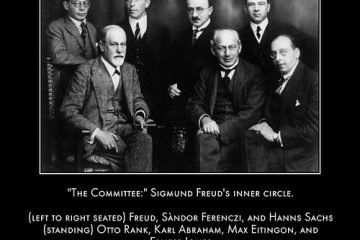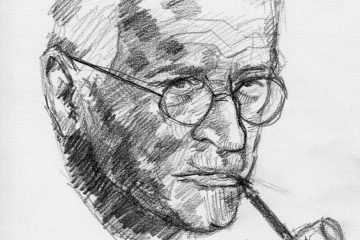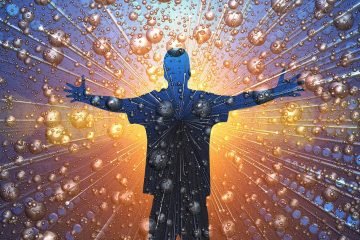
Click below to listen to this article:
Psychodynamic theory
Psychodynamic theory is a broad term that encompasses various approaches to understanding human behaviour and mental processes. The common thread among these approaches is the assumption that unconscious forces, such as motives, conflicts, and memories, influence our thoughts, feelings, and actions. Psychodynamic theory has a long and rich history, dating back to the late 19th century, when Sigmund Freud developed psychoanalysis as a method of treating mental disorders. Since then, psychodynamic theory has evolved and diversified, incorporating new concepts and techniques from different schools of thought. In this article, we will explore the origins and development of psychodynamic theory, as well as its current applications and challenges in the fields of psychology, psychotherapy, and beyond.
History of psychodynamic therapy
Psychodynamic theory is a broad term that encompasses various approaches to understanding human behaviour and mental processes. The common thread among these approaches is the idea that psychological phenomena are influenced by unconscious forces, such as instincts, drives, conflicts, and complexes.
The history of psychodynamic theory can be traced back to the late 19th and early 20th centuries, when Sigmund Freud developed psychoanalysis as a method of treating mental disorders. Freud proposed that the human mind consists of three parts: the id, the ego, and the superego. The id is the source of primal impulses and desires, the ego is the rational and conscious part that mediates between the id and reality, and the superego is the moral and social part that represents internalized values and norms. Freud also suggested that many psychological problems arise from unresolved childhood conflicts, such as the Oedipus complex and the castration anxiety.
Freud’s ideas were influential but also controversial, and many of his followers and critics developed their own versions of psychodynamic theory. Some of the most prominent figures in this field include Alfred Adler, Carl Jung, Karen Horney, Erich Fromm, Melanie Klein, Anna Freud, Heinz Kohut, Harry Stack Sullivan, Erik Erikson, and John Bowlby. These theorists expanded or modified Freud’s concepts in various ways, such as emphasizing the role of social and cultural factors, introducing new types of personality structures and defence mechanisms, exploring different stages of development and attachment styles, and integrating existential and humanistic perspectives. Psychodynamic theory has evolved and continues to be applied in various domains of psychology, such as clinical practice, personality assessment, psychotherapy research, and organizational behaviour.
Modern use of psychodynamic therapy
Psychodynamic theory is a broad term that encompasses various approaches to understanding human behaviour and mental processes. The common thread among these approaches is the assumption that unconscious forces, such as motives, conflicts, and memories, influence our thoughts, feelings, and actions. In this article, we will explore the modern use of psychodynamic theory in various domains of psychology, such as clinical, developmental, social, and organizational. We will also discuss some of the strengths and limitations of psychodynamic theory, as well as some of the current challenges and future directions for this field of study.
Psychodynamic theory has evolved and has been influenced by other theorists, such as Carl Jung, Alfred Adler, Melanie Klein, Anna Freud, and Erik Erikson. Some of the common themes and concepts in psychodynamic theory are:
- The unconscious mind: The part of the mind that contains thoughts, feelings, memories, and impulses that are outside conscious awareness, but influence behaviour.
- The tripartite personality: The idea that personality consists of three interacting structures: the id (the primitive and instinctual part), the ego (the rational and realistic part), and the superego (the moral and idealistic part).
- The psychosexual stages: The stages of development that Freud proposed, in which a child’s sexual energy is focused on different erogenous zones: oral, anal, phallic, latency, and genital.
- The defence mechanisms: The strategies that the ego uses to protect itself from anxiety caused by internal or external conflicts. Examples are repression, denial, projection, rationalization, displacement, sublimation, etc.
- The Oedipus complex: The psychosexual conflict that occurs in the phallic stage, in which a boy develops an unconscious sexual attraction to his mother and a rivalry with his father.
- The Electra complex: The female counterpart of the Oedipus complex, in which a girl develops an unconscious sexual attraction to her father and a rivalry with her mother.
Psychodynamic theory has been applied to various fields of psychology, such as personality psychology, developmental psychology, clinical psychology, social psychology, and organizational psychology. Psychodynamic theory has also inspired various forms of therapy, such as psychoanalytic therapy, psychodynamic therapy, object relations therapy, attachment therapy, interpersonal therapy, etc. This theory aims to help people understand themselves better by exploring their unconscious motivations and resolving their inner conflicts.
Psychodynamic theory has been criticized for being unfalsifiable, subjective, unscientific, deterministic, reductionist, and based on unrepresentative samples. However, it has also been praised for being the first “talking cure”, for highlighting the importance of childhood experiences and unconscious processes, for providing a comprehensive personality theory, and for influencing many other psychological approaches.
The unconscious mind
The unconscious mind is a key concept in psychodynamic theory, which originated from the work of Sigmund Freud and his followers. Psychodynamic theory assumes that human behaviour is largely influenced by unconscious mental processes, such as wishes, impulses, memories, and conflicts, that are hidden from our conscious awareness. The unconscious mind is not directly accessible, but it can be revealed through various methods, such as free association, dream analysis, projective tests, and psychoanalysis. The goal of psychodynamic therapy is to help the client become aware of their unconscious dynamics and resolve them in a constructive way.
According to Freud, the unconscious mind consists of three parts: the id, the ego, and the superego. The id is the primitive and instinctual part of the mind that operates on the pleasure principle. It seeks immediate gratification of its needs and drives, regardless of reality or morality. The ego is the rational and realistic part of the mind that operates on the reality principle. It mediates between the id and the superego, and tries to balance their demands with the external world. The superego is the moral and idealistic part of the mind that operates on the morality principle. It represents the internalized values and standards of society, and judges the ego for its actions.
The tripartite personality
The tripartite personality is a concept proposed by Sigmund Freud. According to Freud, personality consists of three components: the id, the ego, and the superego. These components interact and influence each other to create complex human behaviours.
The id is the primitive and instinctive part of the personality that is present from birth. It operates on the pleasure principle, which seeks immediate gratification of all desires, wants, and needs. The id is not aware of reality, logic, or morality. It only cares about satisfying its impulses, regardless of the consequences.
The ego is the rational and realistic part of the personality that develops from the id during infancy. It operates on the reality principle, which tries to balance the demands of the id with the constraints of reality. The ego uses secondary process thinking, which is logical, rational, and goal-oriented. The ego mediates between the id and the superego, trying to satisfy both without causing harm or anxiety.
The superego is the moral and idealistic part of the personality that develops from the ego during childhood. It operates on the morality principle, which strives to uphold the values and standards of society. The superego consists of two subcomponents: the conscience and the ego-ideal. The conscience is the internalized sense of right and wrong that punishes the ego for wrongdoing with guilt. The ego-ideal is the internalized image of perfection that rewards the ego for good behaviour with pride.
Psychodynamic theory suggests that human behaviour is influenced by the dynamic interactions among these three components of personality. The id, ego, and superego are constantly in conflict with each other, creating psychological tension that motivates action. A healthy personality is one that maintains a balance among these components, allowing for realistic and moral functioning in society.
The psychosexual stages
The psychosexual stages are a concept proposed by Sigmund Freud to explain how personality develops in childhood through the interaction of biological drives and social expectations. According to Freud, there are five psychosexual stages: oral, anal, phallic, latency, and genital.
Each stage is characterized by a focus on a different erogenous zone of the body and a specific psychological conflict that must be resolved for healthy development. Freud believed that if a child experiences too much or too little gratification at any stage, they may become fixated on that stage and develop certain personality traits associated with it.
The psychosexual stages are related to psychodynamic theory, which is a perspective that emphasizes the role of unconscious forces, early childhood experiences, and interpersonal relationships in shaping human behaviour and mental processes. Psychodynamic theory suggests that personality is largely determined by how we cope with the sexual and aggressive impulses of the id, the moral demands of the superego, and the reality constraints of the ego. The psychosexual stages reflect how these three components of personality interact and change over time as the child matures biologically and socially.
The psychosexual stages are a set of five stages that describe how personality and sexuality develop from infancy to adulthood. According to the psychodynamic theory of Sigmund Freud, these stages are driven by the libido, or sexual energy, which focuses on different erogenous zones in each stage. The stages are:
- The oral stage (birth to 1 year), where the mouth is the main source of pleasure and satisfaction.
- The anal stage (1 to 3 years), where the anus and bowel movements become important for gratification and control.
- The phallic stage (3 to 6 years), where the genitals and the Oedipus or Electra complex emerge.
- The latent stage (6 years to puberty), where sexual impulses are repressed and sublimated into other activities.
- The genital stage (puberty to adulthood), where sexual maturity is achieved, and intimate relationships are formed.
These stages are not fixed or rigid, but rather fluid and overlapping. However, Freud believed that if a person experiences too much or too little gratification in a stage, they may develop a fixation, or a persistent attachment to that stage. This may result in certain personality traits or psychological problems later in life.
The defence mechanisms
The defence mechanisms are unconscious psychological strategies that people use to cope with anxiety, guilt, or conflict. They were first proposed by Sigmund Freud and later developed by his daughter Anna Freud and other psychoanalysts. The defence mechanisms involve some distortion of reality or self-deception to reduce the psychological discomfort caused by unpleasant thoughts or feelings.
Some of the most common defence mechanisms are:
- Denial: Refusing to accept or acknowledge some aspect of reality that is too threatening or painful. For example, someone who is addicted to alcohol may deny that they have a problem.
- repression: Pushing unwanted or unacceptable thoughts, feelings, or memories into the unconscious mind, where they are forgotten or inaccessible. For example, someone who was abused as a child may repress the traumatic memories and not remember them as an adult.
- Projection: Attributing one’s own undesirable thoughts, feelings, or impulses to someone else. For example, someone who is angry with their boss may accuse their boss of being angry with them.
- Displacement: Redirecting one’s emotions or impulses from the original source to a less threatening or more acceptable target. For example, someone who is frustrated with their work may take it out on their spouse or children.
- Regression: Reverting to an earlier or less mature stage of development when faced with stress or anxiety. For example, someone who fears a medical procedure may start crying or sucking their thumb.
- Sublimation: Channelling one’s unacceptable impulses into more productive or socially acceptable activities. For example, someone who has aggressive tendencies may become a boxer or a soldier.
- Rationalization: Justifying one’s actions or beliefs with logical reasons, even if they are not true or valid. For example, someone who cheats on a test may rationalize that everyone else does it or that it is not a big deal.
- Reaction formation: Acting in a way that is opposite to one’s true feelings or desires, usually to hide them from oneself or others. For example, someone who is attracted to a person of the same sex may act homophobic or hostile towards them.
- Introjection: Incorporating the values, attitudes, or behaviours of another person into one’s own self-concept, usually to gain their approval or avoid their disapproval. For example, someone who is insecure may adopt the opinions or preferences of a popular person.
- Identification with the aggressor: Adopting the characteristics or perspective of a person who has harmed or threatened one, usually to reduce the fear or anxiety associated with them. For example, someone who was kidnapped may sympathize with their captor or adopt their ideology.
The defence mechanisms are not always unhealthy or maladaptive; they can sometimes help people cope with difficult situations or emotions. However, when they are overused or misused, they can interfere with one’s reality testing, self-awareness, and personal growth.
The Oedipus complex
The Oedipus complex is a concept proposed by Sigmund Freud in his theory of psychosexual development. It describes the unconscious sexual attraction that a child develops for the parent of the opposite sex, and the hostility that the child feels towards the parent of the same sex. The Oedipus complex occurs during the phallic stage of development, which lasts from ages three to five. According to Freud, the child views the same-sex parent as a rival for the affection and attention of the opposite-sex parent, and wishes to eliminate or replace them. This leads to feelings of guilt, anxiety, and fear of punishment, especially castration anxiety in boys.
To resolve the Oedipus complex, the child must identify with the same-sex parent and adopt their characteristics, values, and gender role. This process also forms the basis of the child’s superego, or moral conscience. The Oedipus complex is named after the Greek mythological character Oedipus, who unknowingly killed his father and married his mother. Freud also suggested that there is a female version of the Oedipus complex, called the Electra complex, which was later developed by his follower Carl Jung. The Electra complex involves a girl’s unconscious desire for her father and resentment towards her mother, who she blames for her lack of a penis.
The Electra complex
The Electra complex is a term coined by Carl Jung to describe a girl’s psychosexual competition with her mother for the affection of her father. It is based on the Greek myth of Electra, who plotted to kill her mother for murdering her father. According to Freudian theory, the Electra complex arises during the phallic stage of psychosexual development, when a girl realizes that she does not have a penis and blames her mother for her “castration”. She then develops a desire for her father, who possesses the coveted organ, and a resentment towards her mother, who is seen as a rival. The resolution of the Electra complex occurs when the girl represses her sexual attraction to her father and identifies with her mother, thus adopting feminine traits and values.
Further reading
If you are interested in learning more about psychodynamic theory, here is a list of weblinks for further reading:
Psychodynamic Approach in Psychology: This article provides a comprehensive overview of the key features, assumptions, methodology, strengths and weaknesses of the psychodynamic approach. It also explains the differences between psychoanalysis and psychodynamics, and the main contributions of Sigmund Freud and his followers.
Psychodynamic Theory: Approaches and Proponents: This article traces the origins and development of psychodynamic theory, and introduces some of the major psychodynamic theorists, such as Carl Jung, Alfred Adler, and Erik Erikson. It also discusses some of the common assumptions and applications of psychodynamic theory.
Psychodynamic Theory – an overview | ScienceDirect Topics: This article focuses on the psychodynamic theory of self-injury, and how it explains the motivations and functions of self-harm behaviour. It also reviews some of the empirical evidence and limitations of this theory.
Psychodynamic Theory: Core Concepts, Limitations and its role in Eclectic Therapy: This article summarizes the core concepts of psychodynamic theory, such as the unconscious mind, defence mechanisms, transference and countertransference. It also evaluates some of the limitations and criticisms of this theory, and how it can be integrated with other therapeutic approaches.




0 Comments